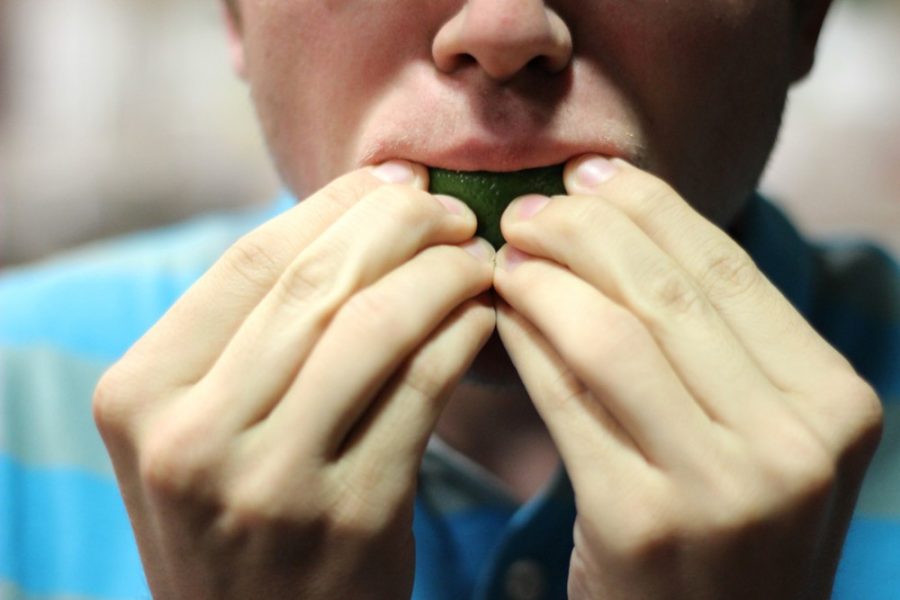The ALS Ice Bucket Challenge collected over $115 million last summer and inspired people within the Lyme disease community to capitalize on this same type of awareness.
Melissa Bell, and four other women personally affected by Lyme disease, seized the opportunity to create the Lyme Disease Challenge, an organization that created the “Take a Bite Out of Lyme Disease” challenge campaign to raise awareness, fund research and dispel common Lyme disease misconceptions.
The challenge requires a photo or video of someone biting a lime, stating a fact about Lyme disease, contributing $10, nominating others to reciprocate and posting it to social media with #LymeDiseaseChallenge.
All of the donations collected will go to the nonprofit International Lyme and Associated Diseases Educational Foundation to be used for educating medical professionals and furthering research and treatment of Lyme disease.
With six times more cases than AIDS, Lyme disease receives 1 percent of the amount of funding that AIDS receives; this is despite Lyme disease symptoms producing the same type of immune dysfunction as AIDS.
Lyme disease, most associated with an infection from a tick, can be transmitted by mosquitoes and other biting-insects, be passed from mother to child during pregnancy, and through blood transfusions; the Red Cross does not screen for Lyme disease and other tick-borne infections.
Bell, once a high-functioning attorney at a top-tier law firm with the energy to push through anything, said her unwavering motivation had to switch gears. Her severe fatigue, caused by the disease, forced her to use her laptop to make a difference from her bed.
“I’m still hopeful, with continued treatment, that I will be able to make progress,” Bell said. “But, unfortunately, I was misdiagnosed for about 17 years, which has led to a very disseminated, hard-to-treat infection and significant damage to virtually every joint in my body.”
The narrow criteria adopted by the Infectious Diseases Society of America and the Centers for Disease Control and Prevention has been the greatest obstacle to the Lyme disease community. This has resulted in perpetuated misconceptions, such as the 14 to 28-day antibiotic treatment cure time frame, or how the disease can only be contracted in a limited amount of cities.
“It’s not just a single species of ticks in a limited geographic area,” Bell said, regarding the CDC’s report stating the opposite. “There are also many strains of the Lyme bacteria that can infect humans, and, unfortunately, the standard test for Lyme disease [works] only to detect that single strain.”
Jean Spinell, who has struggled with Lyme disease since the 1980s, is part of the Tucson Lyme disease support group. Spinell and other support group members mentioned how a Lyme disease strain from Japan, Borrelia miyamotoi, was also found in New York and Russia.
Lyme disease is known as the “great imitator,” as patients with Lyme disease can remain untreated for years due to the symptoms being frequently misdiagnosed as multiple sclerosis, amyotrophic lateral sclerosis, Parkinson’s disease, autism, Alzheimer’s disease, chronic fatigue syndrome, Fibromyalgia, among others.
“The [Infectious Diseases Society of America] will have people think it’s hard to catch and easy to treat, and that’s simply not what so many people are experiencing,” Bell said. “Whether it be Yolanda Foster, Avril Lavigne or the child in your neighborhood who is home-bound for years because they’re so fatigued they can’t even move.”
After being misdiagnosed for 26 years, Ann Sumara of the Lyme disease support group described her frustrations with medical professionals.
“This is the fastest growing infectious disease in the [U.S.],” Sumara said. “When will they get it through their heads that this isn’t going to go away?”
For further information on Lyme disease and the “Take a Bite Out of Lyme Disease” Challenge, go to lymediseasechallenge.org.
_______________
Follow Anna Mae Ludlum on Twitter.









